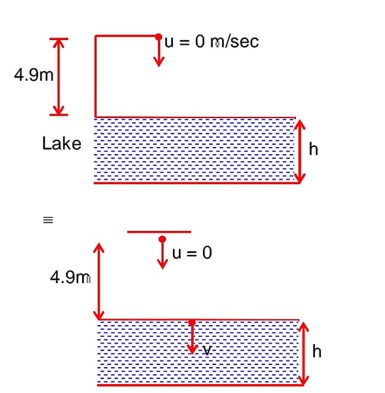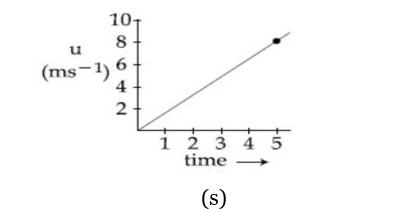Motion in a Straight Line
Get insights from 82 questions on Motion in a Straight Line, answered by students, alumni, and experts. You may also ask and answer any question you like about Motion in a Straight Line
Follow Ask QuestionQuestions
Discussions
Active Users
Followers
New answer posted
5 months agoContributor-Level 10
Total time (T) = 4 sec
Given u = 0 m/sec
a = g = 9.8 m/sec2
h = 4.9 m, t =?
t = 1 sec
'v' be the velocity with which ball hits the water v = u + at
= 0 + 9.8 * 1 = 9.8 m/sec
Time taken to reach the bottom of the lake from surface of the lake
= 4 – 1 = 3 sec
v = 9.8 m/sec
29.4 + 4.9 * 9 = 29.4 + 44.1
H = 73.5 m

New answer posted
5 months agoContributor-Level 10
This is a multiple choice answer as classified in NCERT Exemplar
(b, c, d) velocity of ball before collision =10+1=11m/s
Speed after collision= 10-1=9m/s
As the speed is changing after travelling 10 m and speed is 1m/s hence, time duration of the changing speed is 10
Since the collision of the ball is perfectly elastic there is no dissipation of energy hence, total momentum and kinetic energy are conserved.
Since the train is moving with constant velocity hence, it will act as inertial frame of reference as that of earth and acceleration will be same in both cases.
As the collision is perfectly elastic so momentum and total energy (K.E and
New answer posted
5 months agoContributor-Level 10
This is a multiple choice answer as classified in NCERT Exemplar
(a, c) as we know restoring force is F=-kx
Potential energy of the spring = 1/2kx2
The restoring force is central hence, when particle released it will execute SHM about equilibrium position
Also acceleration= f/m=-kx/m
But at equilibrium position when x=o, a also 0 and at equilibrium position potential energy converted into kinetic energy so speed will also maximum that time.
New answer posted
5 months agoContributor-Level 10
This is a multiple choice answer as classified in NCERT Exemplar
(a, d) x= t-sint
Velocity v = dx/dt=
d/dt (t-sint)=
=1-cost
When cost =1, velocity v=0
Vmax=1-costmin = 1- (-1)=2
Vmin =1- (cost)max= 1-1=0
Hence v lies between 0 and 2
Acceleration a=dv/dt=-sint
When v=0 then cost =1
Vmax= 1- (-1)=2, Vmin=1-1=0
Taking an Exam? Selecting a College?
Get authentic answers from experts, students and alumni that you won't find anywhere else
Sign Up on ShikshaOn Shiksha, get access to
- 66k Colleges
- 1.2k Exams
- 680k Reviews
- 1800k Answers

